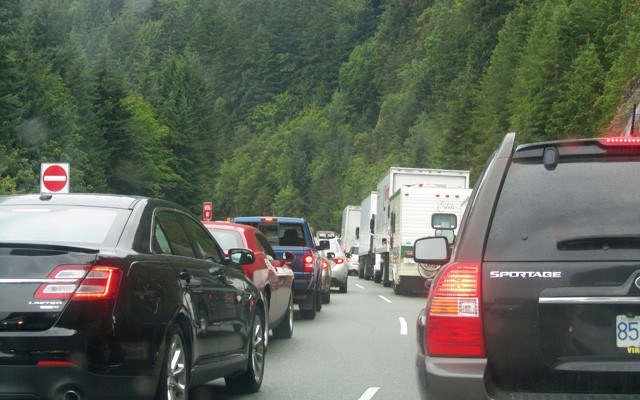It was a May long weekend for the record books — not least because for the first time in years the weather was warm and wonderful.
The village was packed, and GO Fest events were fun for those who attended — even the police could let out a collectively held breath this holiday weekend as for the most part they didn't deal with anything they hadn't seen before.
Could it be that Whistler council and staff's vision of turning the Victoria Day weekend from mob scene to fun zone is working just a few short years after funds were freed up in the municipal budget to try to turn things around?
And let's not forget the partnerships that are part of this success — the bar and club owners, the accommodation sector, police and emergency services, and all those who have worked to re-shape Whistler's reputation over this first long weekend of the summer.
What could really have made the weekend remarkable was dealing with the bumper-to-bumper traffic on the Sea to Sky Highway as people flooded south out the resort and home.
It was snail-slow from Whistler on Monday, and as usual, traffic bunched up in Squamish as cars got caught in the merging lanes and various lights culminating in a standstill at Britannia Beach's pedestrian-crossing light.
It's a pattern we are going to see over and over again this summer as Whistler remains a top tourist destination.
All day holiday Monday, social media was filled with photographs of the highway-turned-parking lot with at least one commentator saying they were "afraid to leave Whistler," knowing the hours of highway stop-and-go driving they were facing.
We may roll our eyes and say that's the price of success, or call out people for whining about the inconvenience, but many are feeling like we are reaching a tipping point where would-be visitors will change their plans rather than deal with the Sea to Sky traffic.
Council and staff at the Resort Municipality of Whistler (RMOW) are aware of these issues, obviously.
It feels like the resort has been dealing with traffic woes for years now.
This week saw the release of the latest Transportation Action Plan (TAP) as the community continues to move forward on how to deal with the issue.
The report focuses primarily on the situation in Whistler but does acknowledge that discussions are ongoing with the provincial Ministry of Transportation and Infrastructure (MoTI).
One of its recommendations is for the RMOW and MoTI to do a highway capacity review.
I bet our Squamish neighbours were none too pleased to be stranded in their neighbourhoods, or places of work, as Whistler traffic snarled the highway through town.
That's a corridor conversation that will continue for some time, no doubt.
The transportation plan unveiled this week is focused on trying to address some of the flow problems right here in Whistler — and it has some political hot potatoes as part of the solutions, not least of which is the removal of free parking in lots 4 and 5 during peak season — July 1 to Sept. 4 and Dec. 15 to April 15.
Residents and employees only will be able to buy a $30/month parking pass during these dates. Day rates for these lots will be $5 a day and after 5 p.m., it will be free.
Within days of this announcement, a petition was launched to try to stop the removal of free parking in these lots. There is no doubt this change will adversely affect people who have to commute to Whistler to work and must drive. In some cases, these are workers forced to move to neighbouring communities because they are unable to find affordable housing in Whistler — and now they are facing increased costs to come to work. Perhaps employers are going to have to consider helping with this expense?
The yin to the pay-parking yang are the changes to transit service the RMOW is proposing. The report is recommending that transit service be increased by 1,750 hours this summer, that the cost of a bus pass be reduced to $50 from $65 a month and that there will be free transit on the weekends from Canada Day through Labour Day. In 2018, there will be three more buses added along with 6,500 hours of service. The idea is to get locals out of their cars and travelling around town by bus. But only by making the bus service more efficient for travellers will it have the desired effect.
You may recall that last December, the Transportation Advisory Group reported on a survey they carried out in peak winter and summer days, which found that the majority of the congested traffic was generated locally — clearly the TAP plan is hoping the increased bus service will get people out of their cars. This is a wait-and-see-if-it-works solution. (And could someone please figure out how buses can carry more than two bikes each?)
Funding all of Whistler's portion of the new transit initiative, as well as some other initiatives, such as secured-bike parking in the village, will be the revenues from the changes to pay parking — about $500,000.
Clearly, driving habits need to change and the TAP is the start. It's unlikely that Whistler is going to get less busy as we head into summer, so perhaps it's time for locals when they can to take the bus or go by bike.




